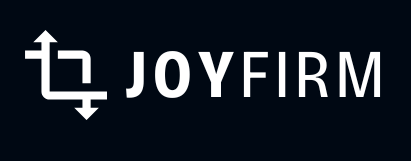How to Automate Your Hiring Process & Find Top Talent Faster
In today’s competitive job market, attracting and hiring top-tier talent is more challenging than ever. Traditional recruitment processes often involve time-consuming manual tasks, inefficient communication, and delays that can cause organizations to lose qualified candidates to competitors. By automating key aspects of the hiring process, companies can streamline operations, improve candidate experiences, and make data-driven hiring decisions that lead to better long-term outcomes.
One of the most powerful tools for recruitment automation is an Applicant Tracking System (ATS). This technology helps companies manage the entire hiring cycle, from sourcing candidates to onboarding new hires, with greater efficiency and accuracy. Automating your hiring process not only reduces administrative burdens but also enhances candidate engagement, allowing HR teams to focus on strategic hiring initiatives rather than manual screening and coordination.
An Applicant Tracking System is a software solution designed to manage and automate the recruitment process. It enables companies to collect, track, and organize candidate applications while integrating with job boards, career websites, and email communication tools. With the rise of intelligent recruitment, ATS platforms have evolved to leverage AI-driven screening, predictive analytics, and automation to enhance hiring efficiency.
The transformation of talent acquisition has been driven by advances in technology. Previously, companies relied on paper applications, spreadsheets, and manual resume reviews, leading to inefficiencies in hiring workflows. Today, intelligent recruitment solutions powered by AI and automation have revolutionized the industry. According to Forbes, companies implementing AI-driven hiring technologies are experiencing faster hiring cycles, improved candidate matching, and a significant reduction in hiring biases.
An Applicant Tracking System plays a critical role in automating the hiring process, reducing time-to-hire, and ensuring compliance with hiring regulations. By automating job postings, resume screening, interview scheduling, and communication, an ATS allows HR teams to focus on building relationships with candidates rather than managing administrative tasks.
Companies using an ATS benefit from improved candidate sourcing, as the software integrates with major job platforms such as LinkedIn, Indeed, and Glassdoor to attract top talent. Automated resume parsing ensures that only qualified candidates are shortlisted, reducing time wasted on unqualified applications. Collaboration tools within an ATS facilitate seamless communication between hiring managers and recruiters, expediting decision-making and reducing hiring bottlenecks.
A robust Applicant Tracking System includes several key features that streamline recruitment efforts. Automated job postings distribute vacancies across multiple platforms in a single click, increasing visibility and reach. Resume screening with AI filters applications based on predefined criteria, ensuring that only top candidates move forward in the selection process. Candidate tracking dashboards provide a centralized view of all applicants, enabling recruiters to monitor progress in real time. Interview scheduling automation reduces back-and-forth emails, optimizing the candidate experience. Analytics and reporting tools deliver insights into recruitment performance, helping HR teams refine their hiring strategies.
To successfully automate the hiring process, companies must first assess their current recruitment workflow and identify areas where automation can improve efficiency. Selecting the right ATS that aligns with business needs is crucial, ensuring compatibility with existing HR tools and integrations. Once implemented, customizing the system’s automation features—such as screening filters, email templates, and scheduling workflows—allows for a tailored recruitment approach.
Using recruitment software, companies can automate candidate sourcing by setting up AI-driven search parameters to identify and reach passive candidates. Pre-employment assessments can be integrated into the hiring workflow, allowing companies to evaluate candidates automatically before interviews. Automated candidate follow-ups ensure consistent communication, reducing drop-off rates and enhancing the applicant experience.
An Applicant Tracking System enhances candidate management by maintaining a structured database of all applicants and tracking their progress throughout the hiring pipeline. Recruiters can set automated status updates for each stage of the hiring process, ensuring that no candidate is left in limbo. Candidate relationship management (CRM) features allow companies to nurture talent pools, engaging with past applicants for future opportunities.
A seamless hiring experience positively impacts employer branding, and ATS-driven efficiency ensures that candidates receive timely feedback rather than experiencing delays. By automating routine hiring tasks, recruiters can dedicate more time to evaluating cultural fit and soft skills—key factors that contribute to long-term employee success.
Automation does not stop at hiring—Applicant Tracking Systems also play a vital role in employee onboarding. Once a candidate is hired, onboarding workflows can be automated to handle document submissions, orientation scheduling, and training module assignments. Paperless onboarding improves compliance, ensuring that all necessary forms are completed and stored securely.
A well-structured onboarding process reduces new hire turnover, as employees receive the necessary resources and guidance from day one. Automating onboarding also accelerates time-to-productivity, allowing new employees to integrate into their roles more efficiently.
Investing in an ATS and automating recruitment processes delivers a high return on investment (ROI) by reducing hiring costs, minimizing time-to-hire, and increasing the quality of hires. Companies that have implemented automated hiring solutions have reported a 30-50% reduction in administrative workload, allowing HR teams to focus on strategic workforce planning.
Case studies show that businesses leveraging AI-driven hiring automation reduce bias in recruitment, improve diversity hiring initiatives, and enhance the candidate experience. Automation enables data-driven decision-making, ensuring that hiring strategies are continuously refined based on real-time performance insights.
By automating the hiring process, companies can revolutionize talent acquisition, reduce inefficiencies, and attract top candidates more effectively. As AI and automation continue to advance, organizations that adopt intelligent recruitment solutions will remain ahead in the competitive talent market.
Companies looking to enhance their hiring strategies should explore Applicant Tracking Systems and implement automation tools to streamline recruitment workflows. The future of hiring is automated, and organizations that embrace this transformation will experience faster, smarter, and more effective hiring outcomes.
